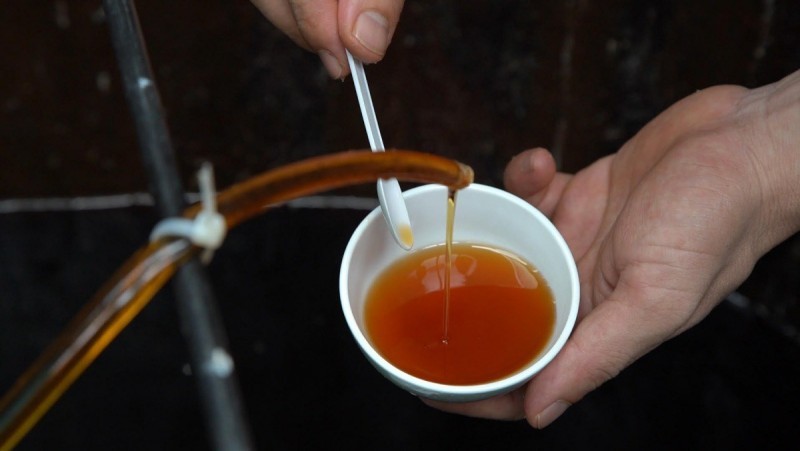The Most Delicious Dishes In Southeast Asia
Asian cuisine includes several major regional cuisines: Central Asian, East Asian, North Asian, South Asian, Southeast Asian, and West Asian. A cuisine is a characteristic style of cooking practices and traditions, usually associated with a specific culture. Asia, being the largest and most populous continent, is home to many cultures, many of which have their own characteristic cuisine.
Ingredients common to many cultures in the East and Southeast regions of the continent include rice, ginger, garlic, sesame seeds, chilies, dried onions, soy, and tofu. Stir frying, steaming, and deep frying are common cooking methods.
Experiencing good food is a key part of any trip. A country's cuisine and the effort involved tell a lot about its past and present. Each dish offers a peek at the culture and history. With so many varied influences over centuries, Southeast Asian cuisine can range from simple, filling fare for farmers to spicy fusion dishes capable of frightening squeamish eaters.
1. Malaysia
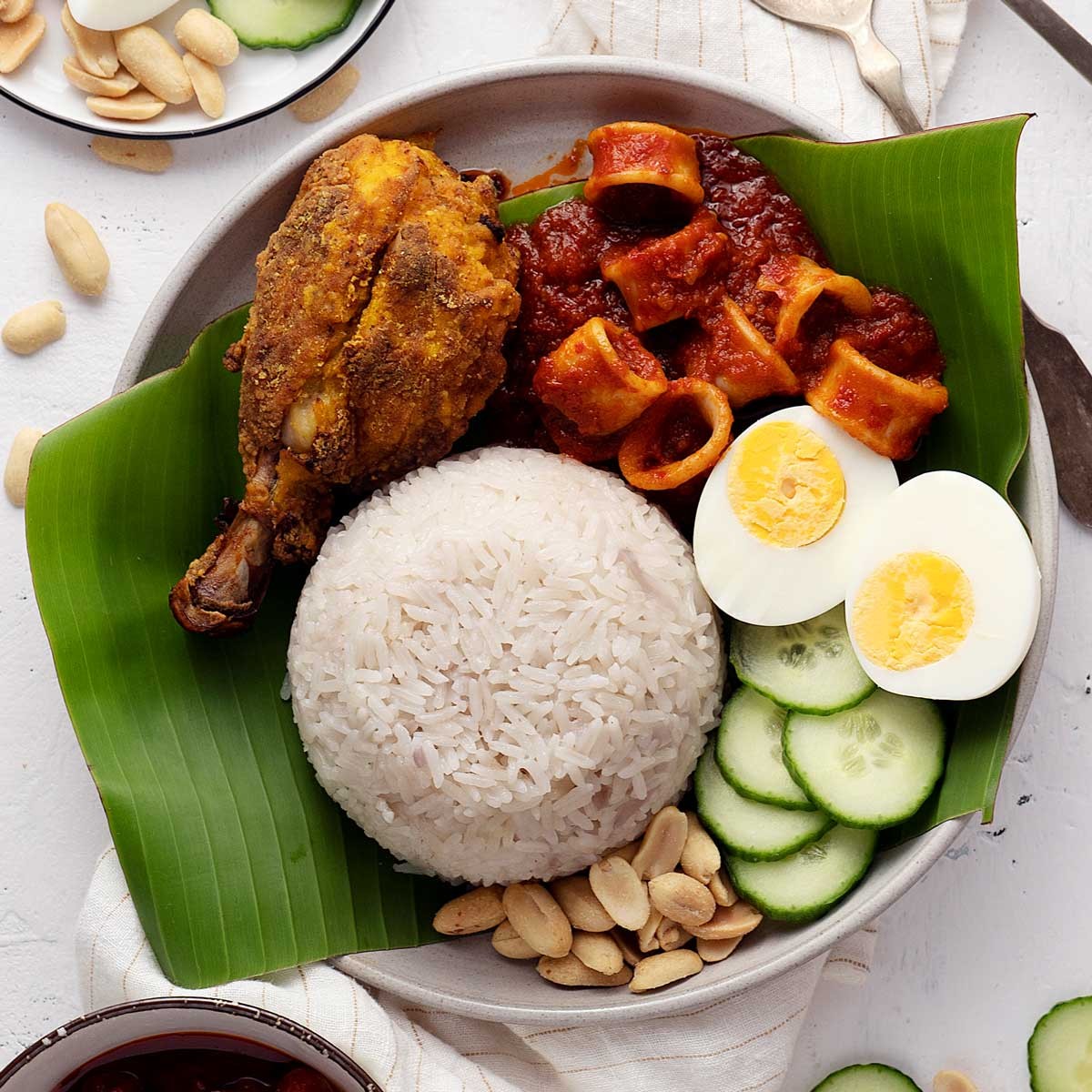 |
| Nasi Lemak is a famous Malaysia dish. Photo: El Mundo Eats |
Nasi Lemak: Nasi lemak is a dish originating in Malay cuisine that consists of fragrant rice cooked in coconut milk and pandan leaf. It is commonly found in Malaysia, where it is considered the national dish. It is also the native dish in neighbouring areas with significant Malay populations such as Singapore, Brunei, and Southern Thailand. In Indonesia it can be found in several parts of Sumatra; especially the Malay regions of Riau, Riau Islands and Medan. Nasi lemak can also be found in the Bangsamoro region of Mindanao, prepared by Filipino Moros, as well as Australia's external territories of Christmas Island and the Cocos (Keeling) Islands. It is considered an essential dish for a typical Malay-style breakfast.
It is not to be confused with nasi dagang, sold in the Malaysian east coast states of Terengganu and Kelantan (and its kindred region in Pattani, Yala and Narathiwat in Thailand and Natuna in Indonesia), although both dishes are often served for breakfast. However, because nasi lemak can be served in a variety of ways, it is often eaten throughout the day.
Malaysian Indian Food: Malaysia's large Indian Muslim community cook up delicious cuisine that is sometimes served on banana leaves — a great choice for vegetarians.
2. Vietnam
 |
| Photo: Dien may XANH |
Pho: Pho is a Vietnamese soup dish consisting of broth, rice noodles (bánh phở), herbs, and meat (usually beef, sometimes chicken). Pho is a popular food in Vietnam where it is served in households, street stalls and restaurants countrywide. Pho is considered Vietnam's national dish. Pho originated in the early 20th century in northern Vietnam and was popularized throughout the world by refugees after the Vietnam War. Because pho's origins are poorly documented, there is disagreement over the cultural influences that led to its development in Vietnam, as well as the etymology of the name. The Hanoi (northern) and Saigon (southern) styles of pho differ by noodle width, the sweetness of broth, and choice of herbs. Pho is served in a bowl with a specific cut of flat rice noodles in clear beef broth, with thin cuts of beef (steak, fatty flank, lean flank, brisket). Variations feature slow-cooked tendon, tripe, or meatballs in southern Vietnam. Chicken pho is made using the same spices as beef, but the broth is made using chicken bones and meat, as well as some internal organs of the chicken, such as the heart, the undeveloped eggs, and the gizzard.
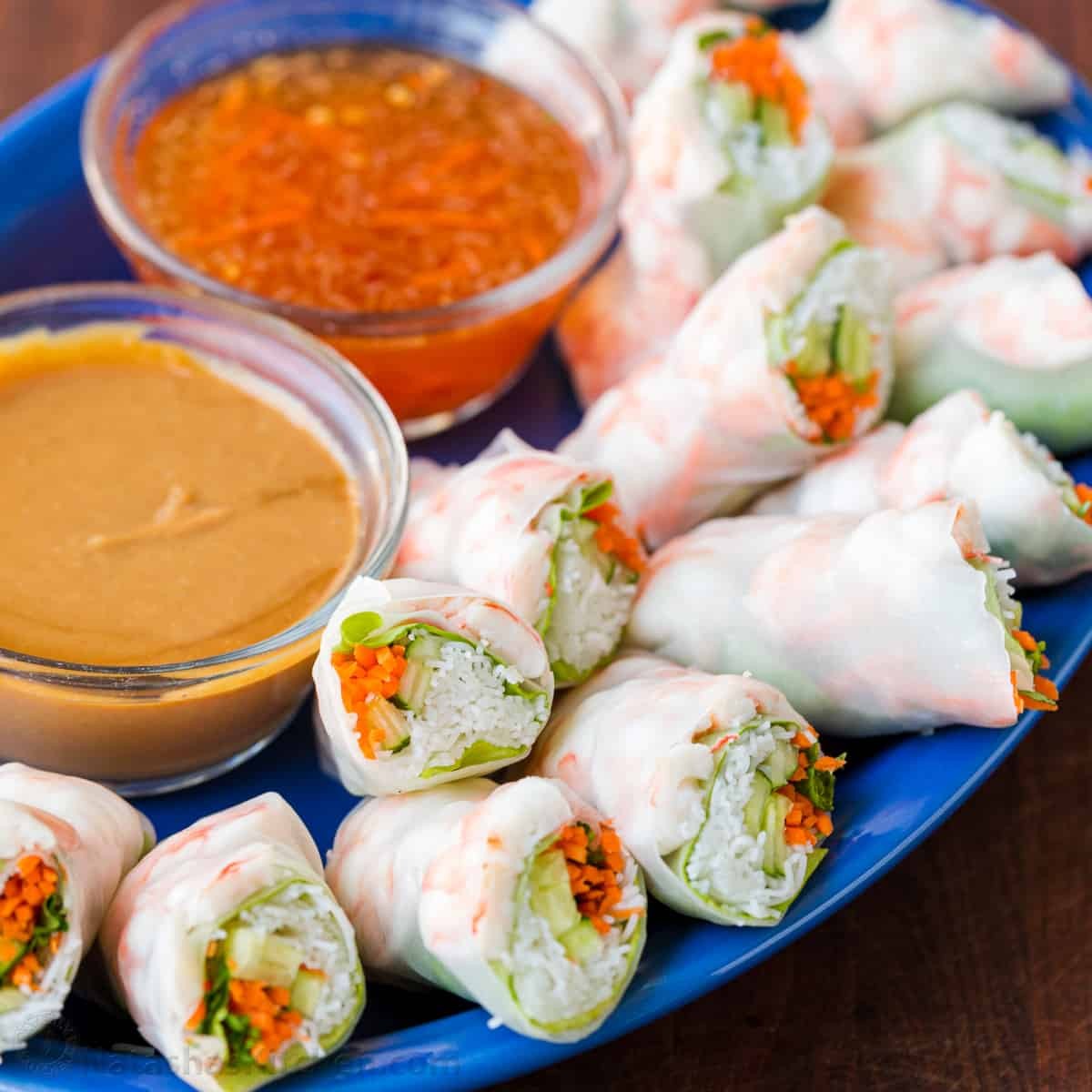 |
| Photo: Natasha's Kitchen |
Goi Cuon: Goi Cuon, salad roll, summer roll, fresh spring roll, spring roll, or rice paper roll, is a Vietnamese dish traditionally consisting of pork, prawn, vegetables, Bun (rice vermicelli), and other ingredients wrapped in Vietnamese bánh tráng (commonly known as rice paper or cold roll). Unlike other spring roll dishes which are believed to be originated from China, Vietnamese Goi Cuon is the country's own creation using rice paper. Goi Cuon is served fresh while others are served fried, like the Vietnamese Cha Gio. They are served at room temperature (or cooled) and are not deep-fried or cooked on the outside. These rolls are considered to be a very popular appetizer with customers in Vietnamese restaurants. The rice paper is dipped in water, then laid flat on a plate with the desired amount of ingredients placed on top. The fresh Goi Cuon is then rolled up and ready to be eaten. Goi Cuon can be served with hoisin sauce, which consists of ground tuong and mixed coconut water (or broth), before being stir-fried with garlic and some sugar and then sprinkled with chilli powder and ground peanuts. Alternatively, Goi Cuon can be served with peanut sauce or other Vietnamese dipping sauces, such as nước chấm, a condiment based on fish sauce.
3. Thailand
Pad Thai: Pad thai is made with rehydrated dried rice noodles with some tapioca flour mixed in, which are stir fried with eggs and chopped firm tofu, flavored with tamarind juice, fish sauce, dried shrimp, garlic or shallots, red chili pepper and palm sugar, and served with lime wedges and often chopped roasted peanuts. It may contain other vegetables like bean sprouts, garlic chives, pickled radishes or turnips, and raw banana flowers. It may also contain fresh shrimp, crab, squid, chicken or other fish or meat.
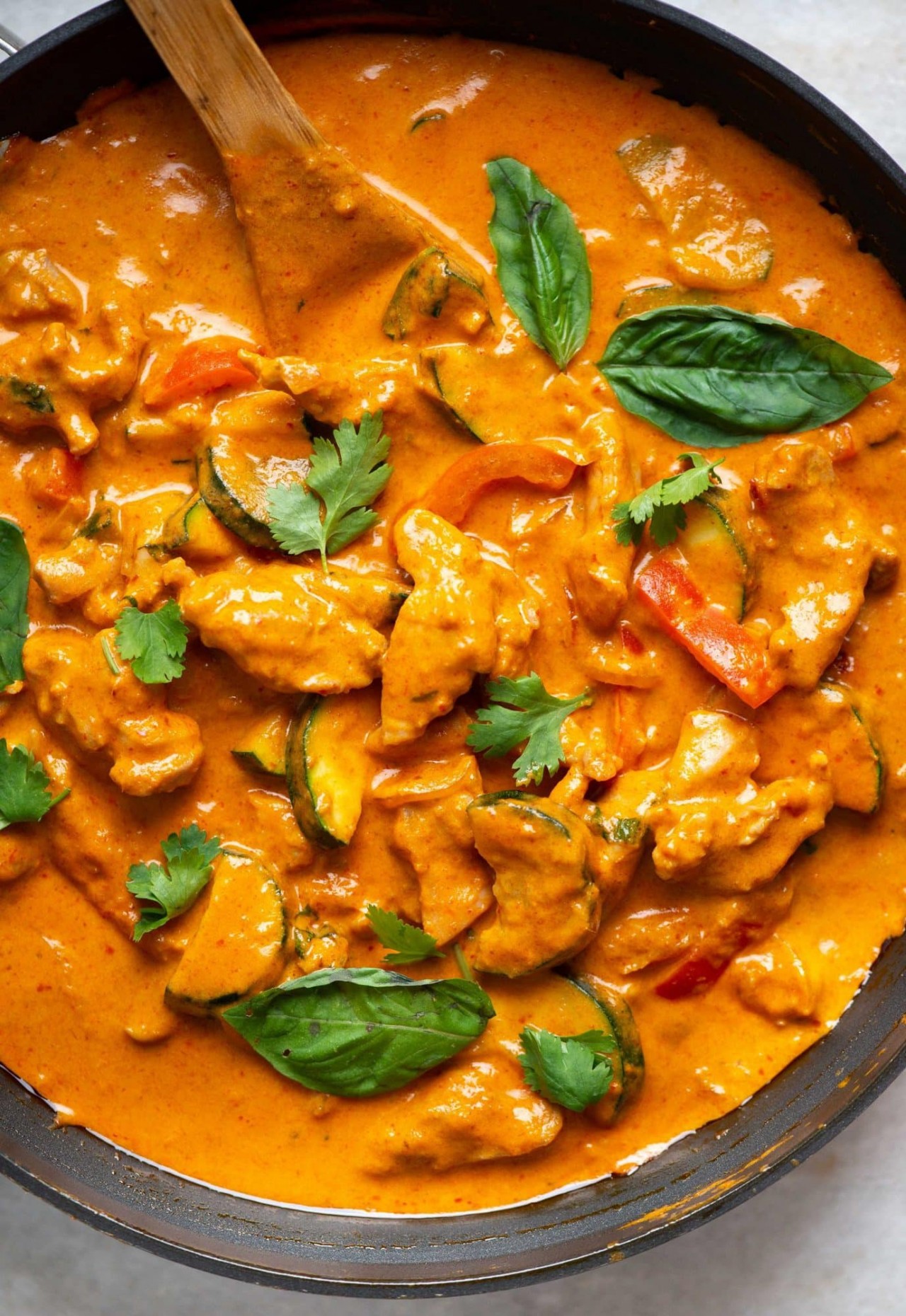 |
| Photo: The flavours of kitchen |
Many of the ingredients are provided on the side as condiments, such as the red chili pepper, lime wedges, roasted peanuts, bean sprouts, spring onion and other miscellaneous fresh vegetables. Vegetarian versions may substitute soy sauce for the fish sauce and omit the shrimp entirely.
Thai Curries: Usually prepared with coconut milk and curry paste, Thai curries are sweet, spicy, and filling. Some popular choices are red, green, yellow, Penang, and Massaman.
Thai Street Food: Thailand has some of the best street food in the world. With prices around one dollar a meal, an excellent dinner can be had by just grazing from food carts. The carts in places where locals eat are infinitely better than those along Khao San Road.
4. Cambodia
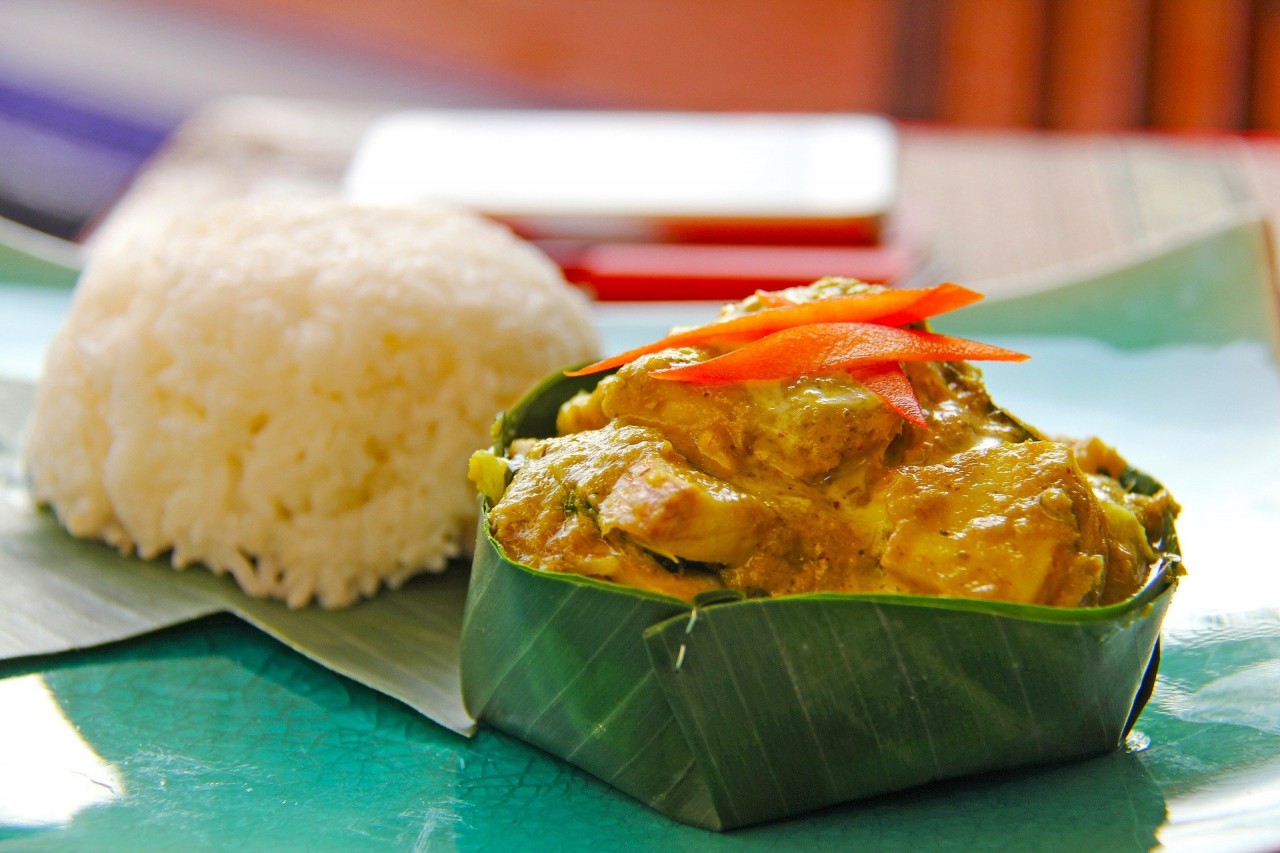 |
| Photo: The International Kitchen |
Fish amok: Usually, goby fish, snakehead fish or catfish is used, however, they are also sometimes substituted with cod, snapper, barramundi, salmon, whiting, or perch. The fish fillets are rubbed with or marinated in a freshly-made yellow or green kroeung mixed with coconut cream or coconut milk and eggs. The curry mixture is placed in a banana leaf container with great morinda leaves at the bottom and steamed for around 20 to 30 minutes until the curry achieves a mousse-like consistency. Great morinda leaves can also be substituted with swiss chard leaves if not available. Fish amok is served hot usually in either banana leaf containers or coconut shells and eaten with steamed rice. Many restaurants in Cambodia also serve less traditional versions of amok with chicken, tofu, or beef instead of fish. Other deviations include the use of a store-bought herb paste, other types of kroeung, more liquid consistency and cooking instead of steaming.
Bai Cha: A fried rice variant made with sausage and soy sauce — certainly a filling option for the hungry!
5. Laos
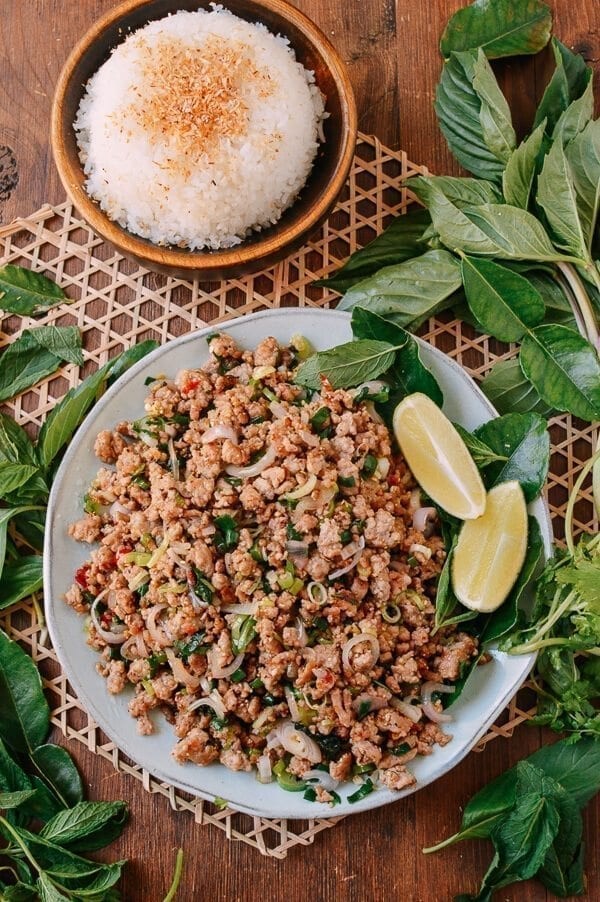 |
| Photo: The Woks of Life |
Laotian cuisine shares some parallels with neighboring Thailand and Cambodia, however, many dishes have their own unique, local twist.
Larb is a type of Lao meat salad that is the national dish of Laos, along with green papaya salad and sticky rice. Larb is also eaten widely in Thailand. Local variants of larb also feature in the cuisines of the Tai peoples of Shan State, Burma, and Yunnan Province, China. Larb is most often made with chicken, beef, duck, fish, pork or mushrooms, flavored with fish sauce, lime juice, padaek, roasted ground rice and fresh herbs. The meat can be either raw or cooked; it is minced and mixed with chili, mint and, optionally, assorted vegetables. Roughly ground toasted rice (khao khoua) is also a very important component of the dish. The dish is served at room temperature and usually with a serving of sticky rice and raw or fresh vegetables.
6. Philippines
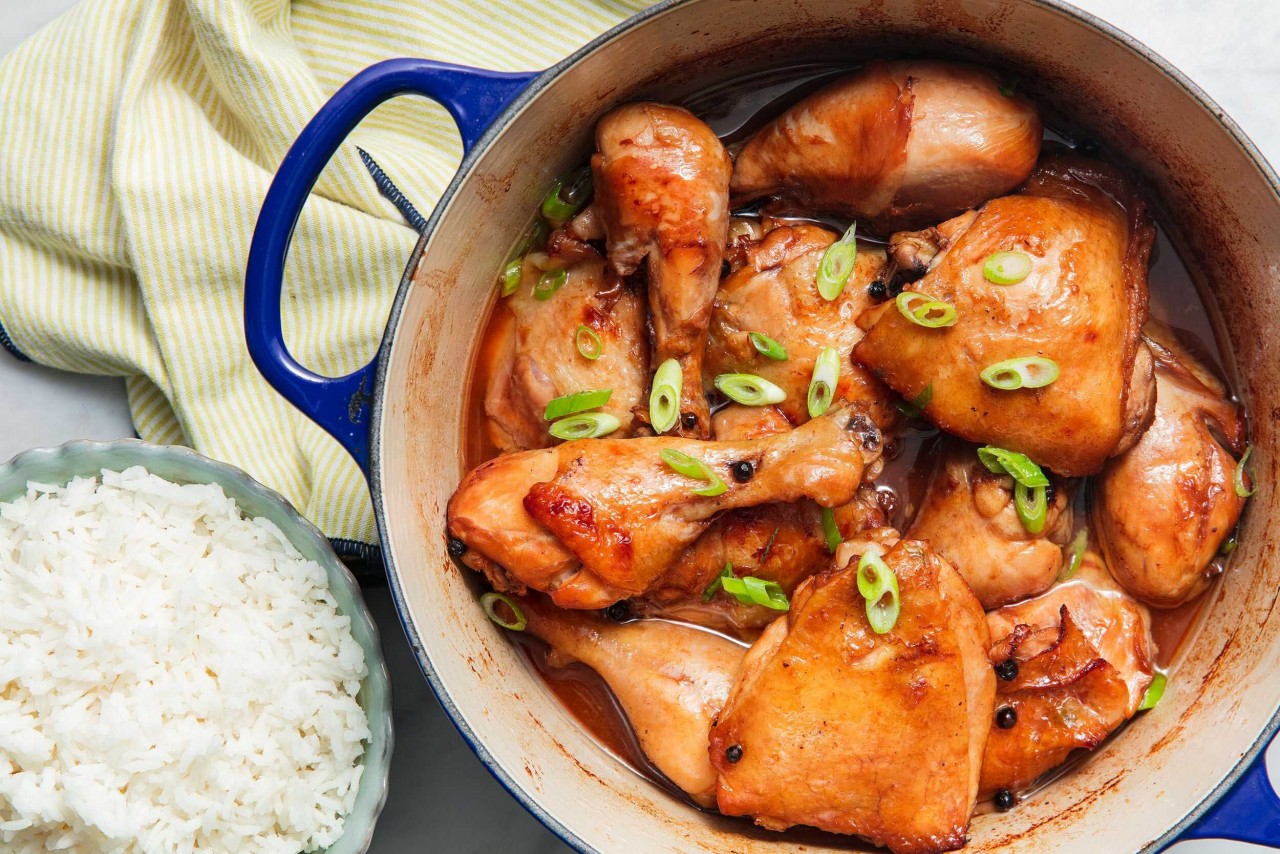 |
| Photo: Delish |
Food in the Philippines is a fusion of Asian cuisine with many Spanish and European influences blended with Chinese. Philippine cuisine is different, and arguably heavier than other Southeast Asian cuisine.
Philippine adobo is a popular Filipino dish and cooking process in Philippine cuisine that involves meat, seafood, or vegetables marinated in vinegar, soy sauce, garlic, bay leaves, and black peppercorns, which is browned in oil, and simmered in the marinade. It has occasionally been considered the unofficial national dish in the Philippines.
Adobo: Based on the main ingredients, the most common adobo dishes are adobong manok, in which chicken is used, and adobong baboy, in which pork is used. Adobong baka (beef), along with adobong manok (chicken), is more popular among Muslim Filipinos. Other meat sources may also be used, such as adobong pugò (quail), adobong itik (duck), adobong kambing (goat). There are also seafood variants which can include fish (adobong isda), catfish (adobong hito), shrimp (adobong hipon), and squid or cuttlefish (adobong pusit). It can even be used to cook vegetables and fruits, like water spinach (adobong kangkong), bamboo shoots (adobong labong), eggplant (adobong talong), banana flowers (adobong pusô ng saging), and okra (adobong okra).
Pancit: Pancit, also spelled pansít, is a general term referring to various traditional noodle dishes in Filipino cuisine. There are numerous types of pancit, often named based on the noodles used, method of cooking, place of origin, or the ingredients. Most pancit dishes are characteristically served with calamansi. Noodles were introduced to the Philippines by Chinese immigrants over the centuries. They have been fully adopted and nativized into the local cuisine, even incorporating Spanish influences. There are numerous regional types of pancit throughout the Philippines, usually differing on the available indigenous ingredients of an area. Unique variants do not use noodles at all, but instead substitute it with strips of coconut, young papaya, mung bean sprouts, bamboo shoots, or seaweed.
7. Singapore
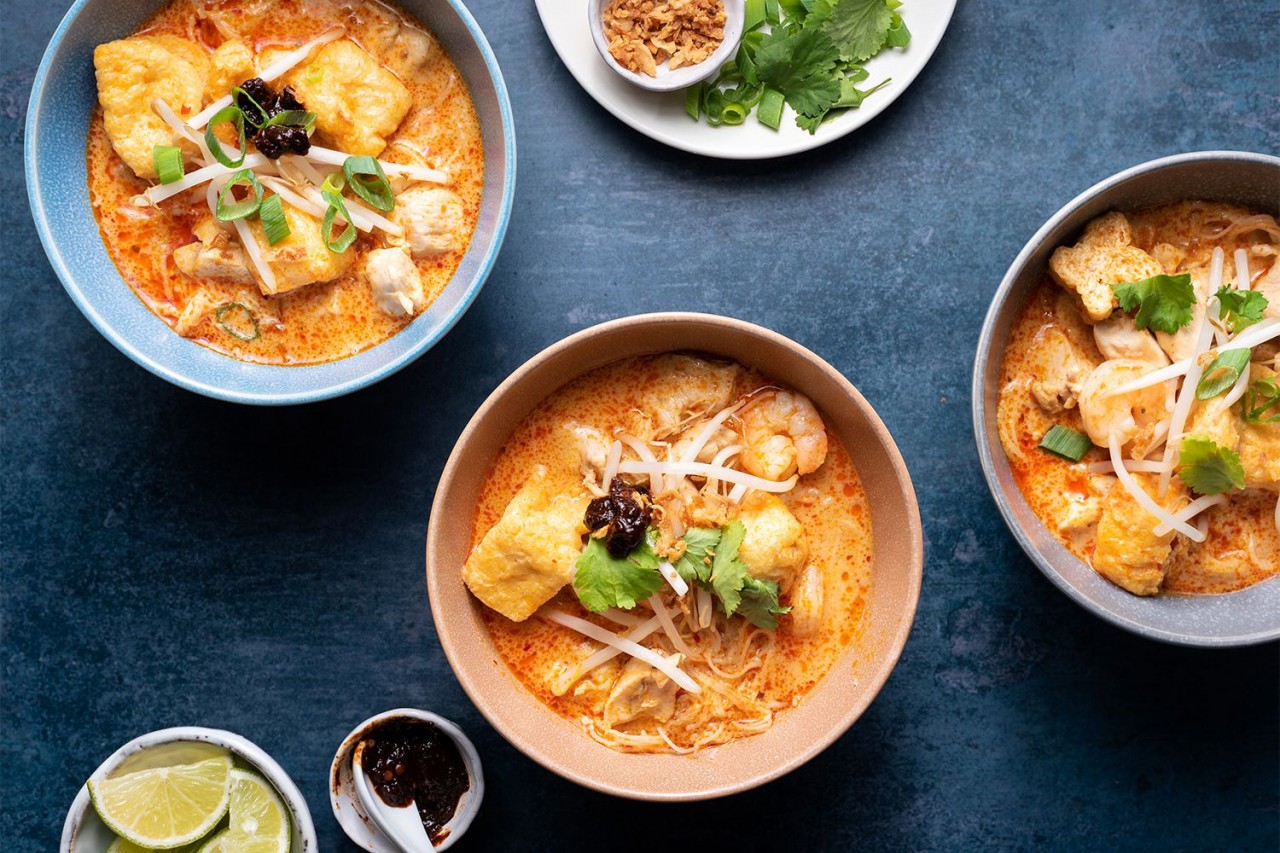 |
| Photo: The Spruce Eats |
Laksa is a spicy noodle dish popular in Southeast Asia. Laksa consists of various types of noodles, most commonly thick rice noodles, with toppings such as chicken, prawn or fish. Most variations of laksa are prepared with a rich and spicy coconut soup or a broth seasoned with sour asam (tamarind or gelugur).
Originating from Peranakan culture, laksa recipes are commonly served in Indonesia, Malaysia, and Singapore.
A wide variety of laksa exists in Southeast Asia, with regional and vendor-specific differences. Laksa can be broadly categorized by its two main ingredients: noodles and soup. Most preparations of laksa are garnished with herbs. Two of the most widely used herbs are mint and Vietnamese coriander, known in Malay as daun kesum or by its colloquial name "laksa leaf". Another popular garnish used for many laksa recipes is the unopened flower bud of the torch ginger, usually sliced or shredded.
 | Beautiful Gift Boxes to Celebrate Year of the Tiger Whether you are gifting or celebrating with friends and family, we wish you luck and fortune in the new year! |
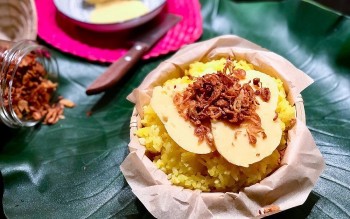 | Top Vietnamese Breakfast You Must Try Here is our list of top Vietnamese breakfasts you must try. They are surprisingly cheap but full of flavors. |
 | Top 7 Cheap Eats of Da Lat The chilly air makes the taste of hot food in Da Lat more enjoyable and memorable, leaving you full at stomach and at heart. |
Recommended
 Handbook
Handbook
Vietnam Moves Up 8 Places In World Happiness Index
 Handbook
Handbook
Travelling Vietnam Through French Artist's Children Book
 Handbook
Handbook
From Lost to Found: German Tourist Thanks Vietnamese Police for Returning His Bag
 Handbook
Handbook
Prediction and Resolution for the Disasters of Humanity
Popular article
 Handbook
Handbook
16 French Films To Be Shown For Free During Tet Holiday In Vietnam
 Handbook
Handbook
Unique Cultural and Religious Activities to Welcome Year of the Snake
 Handbook
Handbook
Reflection on Snakes
 Handbook
Handbook






